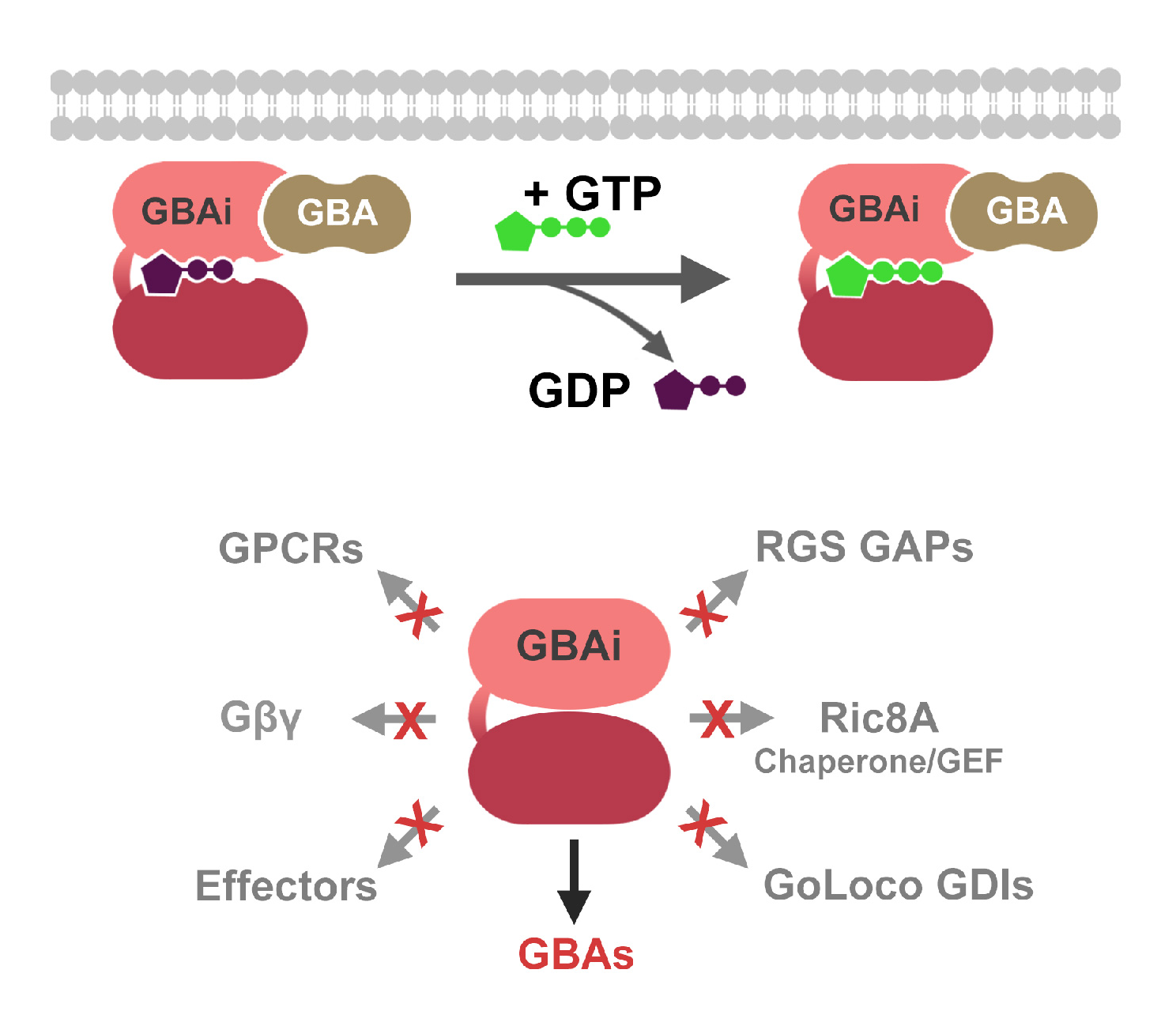A recent publication from Garcia-Marcos laboratory in PNAS shows how to target an atypical mechanism of heterotrimeric G protein signaling linked to different human diseases by rationally designing a synthetic protein inhibitor.
Dysregulation of signaling via heterotrimeric G proteins leads to pathogenesis. Thus, developing an efficient armamentarium to study G protein regulation is crucial for understanding the molecular basis of disease. The classical view of G protein activation as an exclusive function of G protein-coupled receptors has been challenged by the discovery of nonreceptor G protein activators. Dysregulation of a family of such nonreceptor activators has been linked to human disorders like cancer or birth defects, but the underlying mechanisms remain poorly understood due to the lack of experimental tools. The Garcia-Marcos laboratory used protein engineering to rationally design a genetically encoded inhibitor of these G protein activators, called “GBA proteins” for G(alpha) Binding and Activating, and demonstrated its usefulness to block aberrant signaling in cancer cells and abrogate developmental malformations in animal embryos. The engineering consisted of transforming a natural G protein into a synthetic one that binds tightly to GBA proteins but cannot bind to any other G protein binding partner or regulator.
Citation: Specific inhibition of GPCR-independent G protein signaling by a rationally engineered protein.
Leyme A, Marivin A, Maziarz M, DiGiacomo V, Papakonstantinou MP, Patel PP, Blanco-Canosa JB, Walawalkar IA, Rodriguez-Davila G, Dominguez I, Garcia-Marcos M. Proc Natl Acad Sci U S A. 2017 Nov 13. pii: 201707992. doi: 10.1073/pnas.1707992114. [Epub ahead of print] PMID: 29133411
